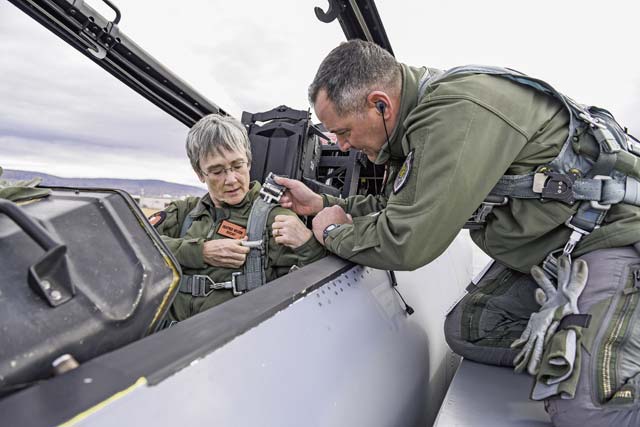
Army Secretary Mark T. Esper, Navy Secretary Richard V. Spencer and Air Force Secretary Heather Wilson spoke about reform Feb. 8, at the Center for Strategic and International Studies in Washington, D.C.
“Reform is the means by which we free up time, money and manpower to do modernization and readiness better,” Esper said. “Modernization has to do with producing more lethally effective weapons and equipment, and readiness includes such things as training and exercises between the services and with the nation’s allies and partners.”
Last year, the Army stood up Army Futures Command, the biggest organization in the Army in 45 years, Esper said. The command, he explained, will focus on the Army’s six modernization priorities: long-range precision fires; a next-generation combat vehicle; future vertical lift; network, air and missile defense; and soldier lethality.
Those are areas needed to counter high-end threats from nations such as Russia and China, he said. The reform aspect had to do with eliminating, downsizing or delaying other programs that, while important, didn’t directly contribute to the six focus areas, he added.
Wilson said the Air Force equivalent of the Army Futures Command is its Warfighting Integration Center. Spencer said the Navy is collaborating with both and also is reviewing every plane, ship, submarine, weapon and piece of equipment it designs or turns out to ensure they’re closely aligned to the high-end fight.
In the last 18 months, naval officials have met with industry leaders to assure them that “we’re partners in solution providing,” Spencer said.
“Their response to us was, ‘You have to be a responsible client,’ ”he continued. “I get it. I have to be clear on what I need and what I can provide. The biggest thing I can provide is consistent funding to allow our partners in the private sector to spend the [research and development] dollars to provide us the solutions that we need.”
Defense Department Audit
Last year was the first year the entire military was audited. All three secretaries had praise for the audit and said it will continue to be an important tool of reform in coming years.
“The audit enables the Navy to see exactly where it is putting its resources and the expected return on investment in its programs,” Spencer said. “We actually have a credible tool to come back to Congress and say, ‘Thank you for the money. Here’s the output metrics of how we’re getting after national security,’” he added.
For example, he said, the audit showed that the Navy has 700 distribution centers. Amazon does it with just 25. “There’s room for improvement,” the Navy secretary said.
Reforming the Culture
Esper acknowledged that risk aversion exists within the modernization enterprise for the Army and said the same probably is true in the other services as well. “At the end of the day, you have to shift the culture so folks are focused on the outcome, and not the process, so they feel empowered to take and manage risk in their programs and less focused on checklists. It takes time, but we’re getting there.”
“It’s a leadership issue,” Spencer said. “We have the tools we need, and now it’s up to leadership to say, ‘Pick up the tool and bang it around,’” referring to a willingness to experiment and to go after cutting-edge developments in such things as hypersonics, rapid prototyping and additive manufacturing.
While reform in the military is important, so is legislative reform as it relates to the services, the secretaries said.
Each year, the military gets money from Congress to operate and pay its personnel. For many years, those dollars were inadequate, and Congress was late in approving those budgets. The secretaries all agreed that in the last few years, particularly fiscal year 2019, the budget was adequate and on time.
Esper cited an example of how adequate and timely funding directly contributes to readiness.
At the end of 2016, the Army had 18 brigade combat teams — the main fighting formations that go into combat — in the top readiness tier, he said. Today, he said, there are 28.
Having a budget and authorization bill on time this year has been a tremendous benefit to the Air Force as well, Wilson said, but she added that the size of the Air Force today is still too small and the services’ planes are showing their age.


